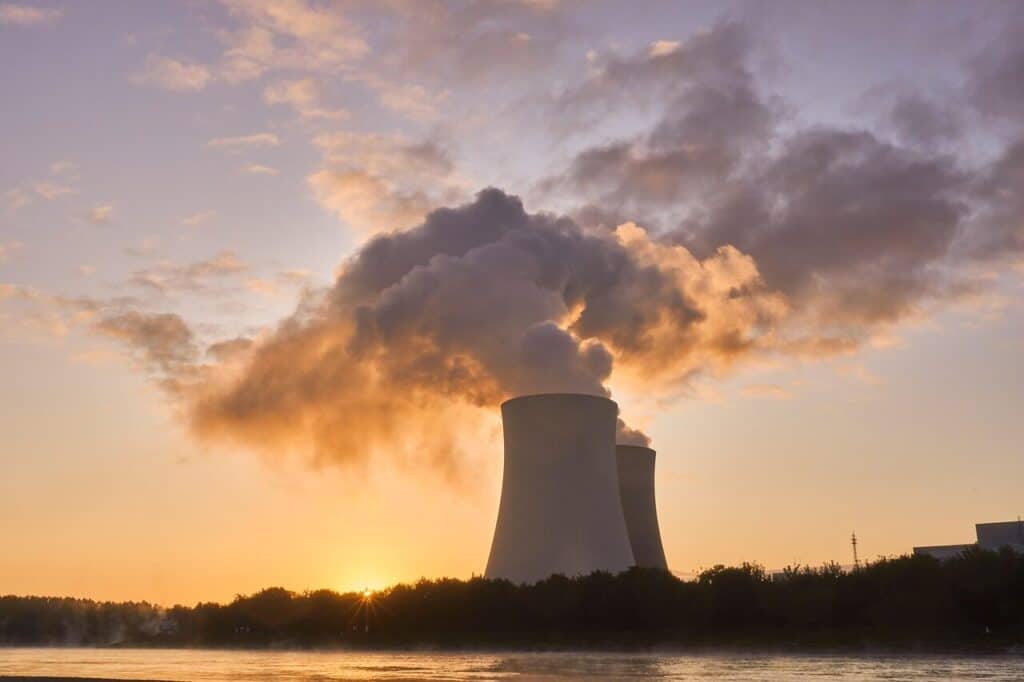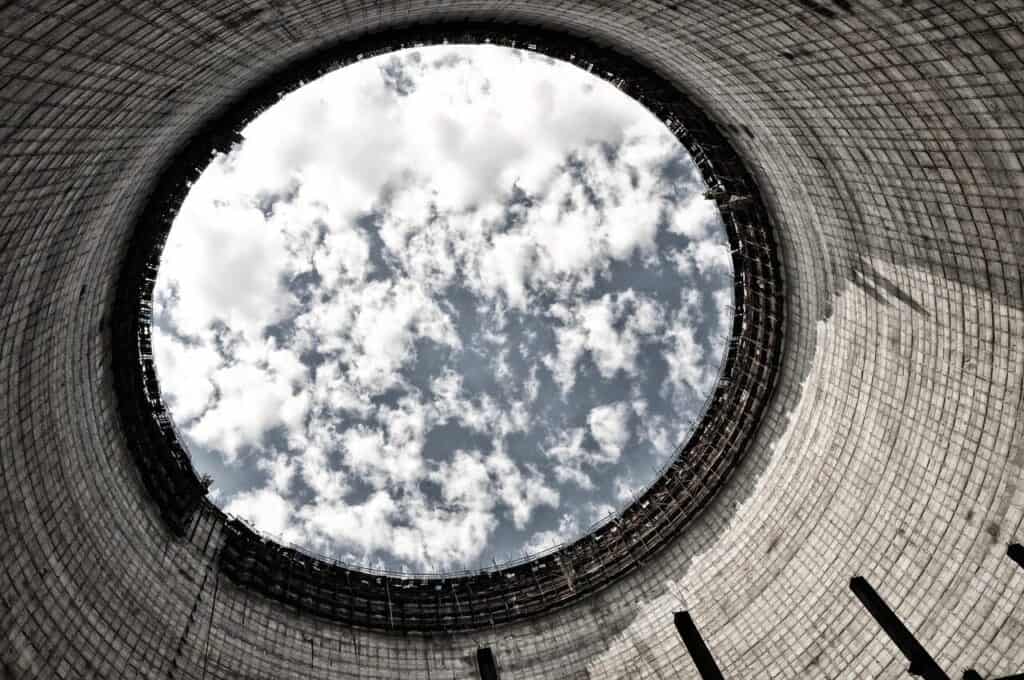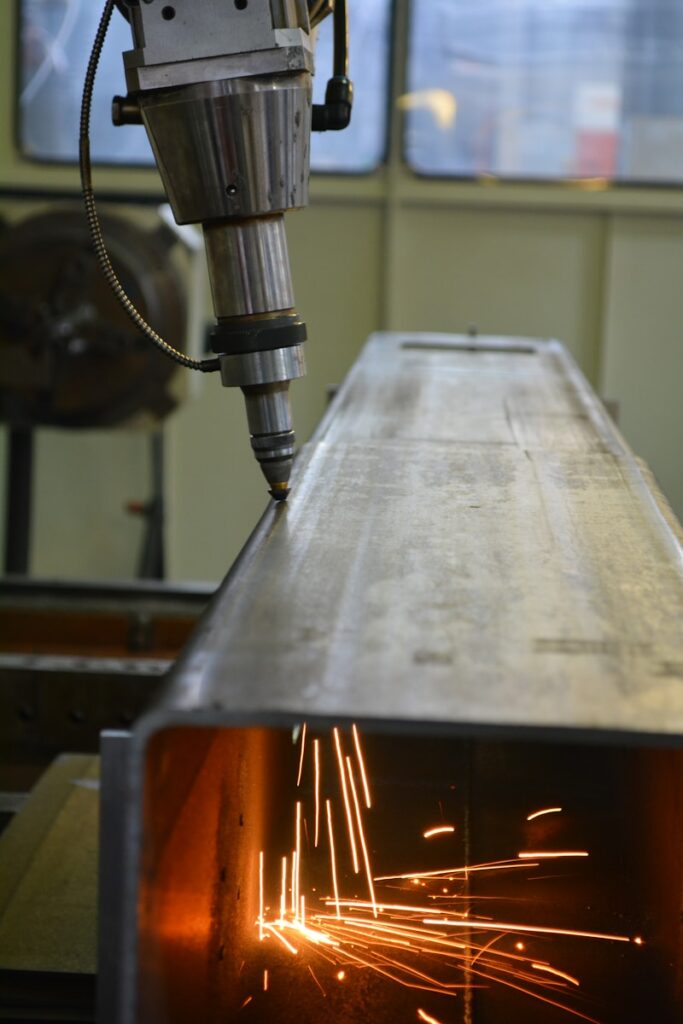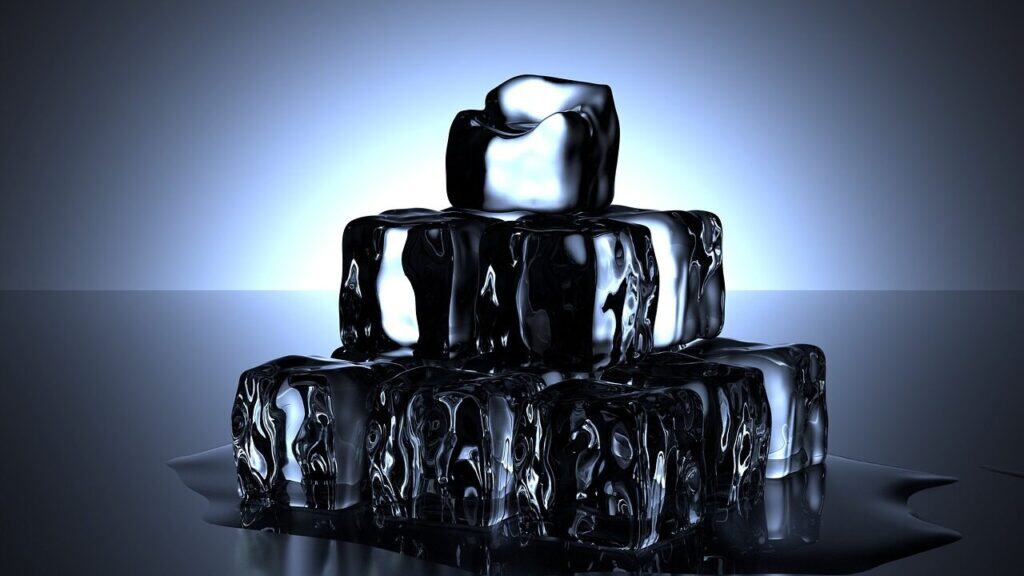Más allá de lo básico: Un análisis técnico en profundidad de los procesos de enfriamiento y conformado
Introducción
Está aquí porque los conocimientos básicos sobre refrigeración y conformación ya no son suficientes. Su búsqueda de análisis técnicos profundos termina ahora. Este artículo va más allá de las simples descripciones para explorar los principios científicos fundamentales que rigen estas etapas críticas de fabricación.
Desglosaremos la física fundamental del transferencia de calor que controla cada ciclo de enfriamiento. A continuación, conectaremos este análisis térmico con la dinámica mecánica del conformado. Exploraremos la compleja interacción de la presión, el flujo y los cambios de estado del material.
Nuestra investigación relacionará directamente estos parámetros del proceso a las propiedades finales del material. Explicaremos cómo se desarrollan factores como la cristalinidad y la tensión residual. Por último, examinaremos los modernos métodos de simulación que permiten a los ingenieros predecir y optimizar estos resultados antes de cortar una sola herramienta.
Esto no es una guía básica. Se trata de una inmersión técnica para ingenierosLos ingenieros, científicos y diseñadores se dedican a dominar la intrincada relación entre la refrigeración, el moldeado y el rendimiento final de la pieza.
La física fundamental del enfriamiento
Para controlar cualquier proceso térmico, primero hay que dominar los principios de la transferencia de calor. La fase de refrigeración en la fabricación sigue tres modos distintos: conducción, convección y radiación. Comprender sus funciones es el primer paso hacia la optimización del proceso y la resolución de problemas.
Conducción: El calor a través del material
La conducción transfiere el calor a través del contacto molecular directo. En nuestro contexto, es el principal mecanismo por el que el calor se desplaza desde el núcleo del material fundido, a través de sus capas de solidificación, hasta el molde o utillaje circundante.
La Ley de Fourier de la conducción del calor define la eficacia de esta transferencia. Este principio establece que la velocidad de transferencia de calor es proporcional al gradiente de temperatura y a la conductividad térmica del material.
Hay dos parámetros fundamentales: la conductividad térmica (k) y la difusividad térmica (α). La conductividad térmica mide la capacidad de un material para conducir el calor. La difusividad térmica mide la rapidez con la que la temperatura de un material se adapta a su entorno.
Para un ingeniero, elegir tanto el material procesado como el material del molde es una decisión sobre conducción. Un material con una alta conductividad térmica, como el aluminio, extraerá el calor de la pieza mucho más rápido que otro con una conductividad más baja, como el acero para herramientas.
Específico Conductividad térmica (k) en temperatura ambiente (W/m-K):
- Polipropileno (PP): ~0,1-0,22
- Policarbonato (PC): ~0.20
- Acero para herramientas P20: ~29
- Aluminio (aleación 6061): ~167
Estos valores muestran la gran diferencia de capacidad de transferencia de calor entre los polímeros comunes y los moldes que les dan forma. El molde es fundamentalmente un dispositivo de extracción de calor.
Convección: El papel de los fluidos
La convección es la transferencia de calor mediante el movimiento de fluidos. En la fabricación, es la proceso de utilización de una refrigeración un medio -por lo general, agua o aceite- que circula por los canales de un molde para evacuar el calor.
La ley de Newton del enfriamiento describe este proceso. La velocidad de transferencia de calor es proporcional a la diferencia de temperatura entre la superficie del molde y el fluido refrigerante.
El parámetro clave es el coeficiente de transferencia de calor (h). Este valor cuantifica la eficacia de la evacuación de calor de la pared del molde al refrigerante. Está muy influido por las propiedades del fluido y las condiciones de flujo.
En estos canales de refrigeración existe una distinción crítica entre flujo laminar y turbulento. El flujo laminar es suave y ordenado. Da lugar a una capa de fluido de movimiento lento en la pared del canal que aísla el molde y reduce la eficacia de la refrigeración.
El flujo turbulento se caracteriza por remolinos caóticos y mezclas. Interrumpe esta capa aislante. Aumenta drásticamente el coeficiente de transferencia de calor, lo que permite una eliminación del calor del molde mucho más agresiva y eficaz. Conseguir un flujo turbulento es un objetivo primordial del diseño de circuitos de refrigeración.
La radiación: Un factor a tener en cuenta
La radiación transfiere calor a través de ondas electromagnéticas. A diferencia de la conducción y la convección, no requiere ningún medio. Su importancia aumenta drásticamente con la temperatura.
Este modo se rige por la ley de Stefan-Boltzmann. Establece que la energía radiada es proporcional a la cuarta potencia de la temperatura absoluta del objeto. Esta relación exponencial la convierte en un factor dominante en los procesos de alta temperatura.
Aunque es menos crítica para el moldeo por inyección de polímeros a baja temperatura, la radiación es una consideración primordial en el moldeo de vidrio, la fundición de metales y el termoformado. También interviene cuando una pieza caliente se expulsa de un molde y se enfría al aire libre.
Tabla 1: Análisis comparativo de la transferencia de calor
Modo de transferencia de calor | Principio rector | Parámetros clave | Aplicación principal en procesos de conformación (ejemplo) |
Conducción | Ley de Fourier | Conductividad térmica (k), Difusividad térmica (α) | El calor se desplaza del núcleo de la pieza de plástico a la pared del molde. |
Convección | Ley de enfriamiento de Newton | Coeficiente de transferencia de calor (h), caudal, tipo de fluido | El agua circula por los canales de refrigeración del molde para eliminar el calor del acero. |
Radiación | Ley de Stefan-Boltzmann | Emisividad, temperatura de la superficie | Una pieza metálica forjada en caliente enfriándose en una cinta transportadora al aire libre. |
La mecánica de la conformación
El enfriamiento no se produce de forma aislada. Está inextricablemente ligado a la dinámica mecánica del propio proceso de moldeado: la presión que comprime el material y el flujo que llena la cavidad. Limitarse a enfriar más rápido es un planteamiento ingenuo. Para dominar el proceso hay que comprender esta interacción.
Reología y viscosidad
La reología es el estudio de cómo fluyen los materiales. En el caso de los polímeros, la propiedad reológica más importante es la viscosidad, es decir, la resistencia a fluir. Esta propiedad cambia drásticamente con la temperatura.
Cuando un polímero fundido se enfría, su viscosidad aumenta exponencialmente. Este es el reto fundamental: el material debe seguir siendo lo suficientemente fluido como para llenar el molde por completo y, al mismo tiempo, solidificarse con la rapidez suficiente para un tiempo de ciclo corto.
Definimos una temperatura crítica de "no flujo". Este es el punto en el que el material es esencialmente demasiado viscoso para ser empujado más allá bajo presiones normales de procesamiento. Este concepto es crucial para entender la "congelación" de la puerta en el moldeo por inyección, donde el estrecho punto de entrada se solidifica, cortando la capacidad de empaquetar más material en la cavidad.
Además, los polímeros fundidos no suelen ser newtonianos. Su viscosidad depende de la velocidad de cizallamiento. A medida que el material se empuja más rápidamente a través de canales estrechos, las cadenas poliméricas se alinean y la viscosidad disminuye. Este comportamiento se conoce como adelgazamiento por cizallamiento.
Esto significa que la viscosidad no es un número único, sino una función de la temperatura, la velocidad de cizallamiento y la presión. Comprender este comportamiento dinámico es esencial para predecir cómo se llenará un molde.
Presión, volumen y temperatura (PVT)
Los materiales se dilatan al calentarse y se contraen al enfriarse. La relación entre presión, volumen y temperatura (PVT) es una propiedad fundamental de la materia que dicta las dimensiones finales de una pieza.
Los materiales poliméricos presentan un comportamiento PVT complejo. Los polímeros amorfos, como el policarbonato, tienen una contracción relativamente lineal y predecible a medida que se enfrían de fundido a sólido.
Los polímeros semicristalinos, como el polipropileno, son diferentes. Cuando se enfrían por encima de su temperatura de cristalización, la formación organizada de estructuras cristalinas provoca un aumento repentino y significativo de la densidad. Esto provoca una fuerte caída del volumen específico.
Esta contracción volumétrica es la causa principal de las marcas de hundimiento y los huecos en una pieza moldeada. Para contrarrestarla, aplicamos y mantenemos una presión elevada durante la fase de enfriamiento, la etapa de "empaquetado" o "mantenimiento". Esta presión obliga a introducir material adicional en la cavidad para compensar el volumen perdido por la contracción.
Un diagrama PVT es el mapa del ingeniero para este proceso. Muestra gráficamente el volumen específico de un material a una temperatura y presión determinadas. Esto nos permite predecir la cantidad de contracción y calcular la presión de empaquetado necesaria para producir una pieza dimensionalmente exacta.
La capa congelada
Cuando la masa fundida caliente entra en contacto con las paredes más frías del molde, el calor se dispersa rápidamente. Esto hace que una fina capa de material en la interfaz se solidifique casi instantáneamente, formando una "capa congelada" o "piel".
Esta capa tiene profundas consecuencias. Mientras que el núcleo de la pieza permanece fundido y sigue fluyendo, esta piel congelada está inmóvil. Forma el límite inicial del canal de flujo.
El espesor de esta capa aumenta a medida que prosigue el enfriamiento, estrechando el paso del material fundido restante. Esto aumenta la presión necesaria para llenar los extremos de la pieza.
Esta capa congelada experimenta una historia térmica muy diferente a la del núcleo. Se enfría rápidamente, fijando una orientación molecular y un estado de tensión específicos. En cambio, el núcleo se enfría mucho más lentamente. Este enfriamiento diferencial es una fuente primaria de tensión interna, que exploraremos a continuación.
Del proceso a las propiedades
La física del enfriamiento y la mecánica del conformado no son ejercicios académicos. Determinan directamente las características de rendimiento finales y mensurables de la pieza fabricada. Controlar el proceso significa controlar las propiedades.
Cristalinidad y microestructura
La estructura molecular de la pieza final es el resultado directo de su historia térmica. A grandes rasgos, clasificamos los polímeros en amorfos o semicristalinos.
Los polímeros amorfos tienen una estructura molecular desordenada y enredada, como un plato de espaguetis. Los polímeros semicristalinos contienen regiones de cadenas plegadas muy ordenadas (cristalitos) dentro de una matriz amorfa.
El grado de cristalinidad viene dictado por la velocidad de enfriamiento. Cuando un polímero semicristalino se enfría lentamente, sus cadenas moleculares tienen más tiempo y energía para organizarse en estructuras cristalinas ordenadas. El resultado es una mayor cristalinidad.
El enfriamiento rápido, o quenching, congela las cadenas en un estado más desordenado. Esto conduce a una menor cristalinidad.
No es una distinción trivial. Una mayor cristalinidad conduce generalmente a una mayor rigidez, dureza, resistencia química y opacidad, pero puede reducir la resistencia al impacto y la claridad. Controlar la velocidad de enfriamiento es, por tanto, un método directo para ajustar estas propiedades finales de la pieza. En los metales, se aplica un principio similar, en el que las velocidades de enfriamiento (por ejemplo, enfriamiento rápido frente a recocido) determinan el tamaño y la estructura del grano, que a su vez controlan la dureza y la ductilidad.
Tensiones residuales: El enemigo oculto
Las tensiones residuales son tensiones que permanecen bloqueadas dentro de una pieza después de que se hayan eliminado todas las cargas externas y presiones de fabricación. Son consecuencia directa de un enfriamiento no uniforme.
Como ya hemos dicho, la capa exterior de una pieza se enfría y solidifica primero. A continuación, el núcleo, aún fundido, comienza a enfriarse y a encogerse. Sin embargo, su contracción se ve limitada por la ya rígida capa exterior.
Esta lucha entre el núcleo que se contrae y la piel sólida somete a la piel a compresión y al núcleo a tensión. Este sistema equilibrado de tensiones internas queda fijado en la pieza tras la solidificación completa.
Las consecuencias de una tensión residual elevada son casi siempre negativas. Son la causa principal del alabeo a largo plazo y de la inestabilidad dimensional. Pueden provocar un fallo prematuro bajo carga, ya que la tensión aplicada se suma a la tensión de tracción interna ya existente. Pueden reducir significativamente la resistencia al impacto y la resistencia al agrietamiento por tensión ambiental de una pieza.
Precisión dimensional y alabeo
El alabeo es la distorsión dimensional de una pieza una vez desmoldeada. Es la manifestación macroscópica de la contracción diferencial causada por un enfriamiento no uniforme.
Si una zona de una pieza se enfría y encoge más que otra, la pieza se doblará o torcerá para adaptarse a esta tensión interna. Esto puede deberse a variaciones en la colocación de los canales de refrigeración, lo que provoca "puntos calientes" en la superficie del molde.
La propia geometría de la pieza suele ser la principal culpable. Una pieza con secciones gruesas y finas se enfriará de forma no uniforme. La sección gruesa mantendrá el calor durante más tiempo y se encogerá más durante un periodo más largo, mientras que la sección fina se solidifica y se encoge rápidamente. Esta contracción diferencial hace que la pieza se deforme.
Los controles del proceso, como la presión y el tiempo de mantenimiento, son las principales herramientas para mitigar estos efectos. Al empaquetar más material en las secciones más calientes y gruesas, podemos compensar parcialmente la mayor contracción volumétrica que experimentarán. El resultado es un producto final más estable y de dimensiones más exactas.
Tabla 2: Efecto de la velocidad de enfriamiento en las propiedades clave
Propiedad | Efecto de enfriamiento rápido | Efecto de enfriamiento lento | Material típico afectado |
Cristalinidad | Menor grado de cristalinidad; estructura más amorfa. | Mayor grado de cristalinidad; estructura más ordenada. | Polímeros semicristalinos (PP, PE, nailon). |
Tensión residual | Mayor, debido a los grandes gradientes de temperatura entre la piel y el núcleo. | Menor, ya que los gradientes de temperatura son menores, lo que permite la relajación de la tensión. | Todos los polímeros y metales. |
Dureza/Rigidez | A menudo inferior en polímeros semicristalinos; superior en metales endurecidos por temple. | A menudo mayor en polímeros semicristalinos; menor en metales recocidos. | Polímeros, metales. |
Estabilidad dimensional | Deficiente; las tensiones residuales elevadas provocan alabeo y fluencia después del moldeado. | Mejor; una menor tensión interna se traduce en una pieza más estable a lo largo del tiempo. | Todos los polímeros, especialmente con geometría compleja. |
Resistencia al impacto | A menudo más alto en polímeros semicristalinos (estructura cristalina menos quebradiza). | A menudo inferior en polímeros semicristalinos (estructura cristalina más quebradiza). | Polímeros semicristalinos. |
Análisis y simulación avanzados
Durante décadas, la optimización de procesos era un ejercicio reactivo de ensayo y error que se realizaba en el taller. Hoy en día, las modernas herramientas de ingeniería nos permiten pasar de una mentalidad reactiva a una proactiva. Podemos predecir y optimizar todo el proceso de enfriamiento y conformado en un entorno virtual.
El poder del CAE
El software de ingeniería asistida por ordenador (CAE) utiliza métodos numéricos como el análisis de elementos finitos (FEA) para simular la compleja física de los procesos de fabricación. Herramientas como Moldflow, SOLIDWORKS Plastics o Ansys permiten a los ingenieros crear un "prototipo virtual" de la pieza, el molde y el proceso.
Esta simulación proporciona una visión sin precedentes mucho antes de cortar el acero. Los beneficios son transformadores para el desarrollo de productos.
Los ingenieros pueden predecir con exactitud cómo fluirá el material fundido y cómo llenará la cavidad del molde. Pueden visualizar la progresión del frente de fusión en tres dimensiones.
Podemos visualizar la distribución completa de la temperatura en toda la pieza y el molde en cualquier punto del ciclo. Así se identifican los puntos calientes o las zonas de enfriamiento ineficiente.
Esto permite detectar a tiempo posibles defectos de fabricación. Problemas como las trampas de aire, las líneas de soldadura donde se unen los frentes de fusión y las marcas de hundimiento debidas a un empaquetado insuficiente pueden verse y corregirse en la fase de diseño.
Y lo que es más importante, la simulación permite optimizar la disposición de los canales de refrigeración. Los ingenieros pueden probar virtualmente diferentes diseños de circuitos, diámetros y caudales para conseguir la refrigeración de piezas más uniforme posible. Esto aborda directamente la causa principal del alabeo y la tensión residual.
Entradas y salidas clave
El principio GIGO (Garbage In, Garbage Out) se aplica absolutamente a la simulación. La precisión del resultado depende totalmente de la calidad de los datos de entrada.
Un análisis de flujo térmico sólido requiere tres categorías de datos de alta fidelidad. En primer lugar, los datos del material. No se trata solo de una temperatura de fusión, sino del perfil reológico completo (viscosidad frente a velocidad de cizallamiento), los datos PVT completos y las propiedades térmicas como la conductividad y el calor específico.
En segundo lugar están los parámetros del proceso. Estos son los ajustes que se utilizarán en la máquina real: temperatura de la masa fundida, temperatura del refrigerante del molde, perfiles de presión de inyección y empaquetado, y todos los ajustes de temporización del ciclo.
En tercer lugar está la geometría. Esto incluye los modelos CAD 3D de alta resolución no solo de la pieza, sino también del sistema de alimentación (bebedero, guías, compuertas) y los canales de refrigeración dentro del molde.
Con estos datos, el software puede proporcionar resultados que den a los ingenieros una imagen clara y procesable del proceso.
Tabla 3: Entradas y salidas principales de una simulación de enfriamiento y modelado
Entradas clave de la simulación | Descripción / Importancia |
Datos reológicos del material | Define cómo cambia la viscosidad con la velocidad de cizallamiento y la temperatura. Fundamental para una predicción precisa del llenado. |
Datos PVT del material | Define cómo cambia el volumen del material con la presión y la temperatura. Es fundamental para predecir la contracción y el alabeo. |
Propiedades térmicas del material | Incluye la conductividad térmica y el calor específico. Regula la velocidad de transferencia de calor y el tiempo de enfriamiento. |
Parámetros del proceso | Velocidad de inyección, presión/tiempo de envasado, temperaturas de fusión/moldeo. Define las condiciones reales de fabricación que se simulan. |
Geometría 3D (pieza, molde, refrigeración) | El gemelo digital del sistema físico. La precisión de la geometría dicta la precisión del análisis térmico y de flujo. |
Principales resultados de la simulación | Qué le dice al ingeniero |
Tiempo de llenado / Presión | Predice si la pieza se llenará completamente y la presión necesaria. Identifica posibles disparos cortos. |
Temperatura al final del llenado | Muestra la distribución de la temperatura a medida que se completa el llenado. Destaca los puntos fríos o el calentamiento excesivo por cizallamiento. |
Temperatura de eyección | Visualiza la temperatura de la pieza al extraerla del molde. Identifica los puntos calientes que pueden causar defectos postmoldeo. |
Contracción volumétrica | Predice el porcentaje de contracción en toda la pieza. Localiza las zonas propensas a marcas de hundimiento y vacíos. |
Alabeo Desviación | Simula la forma final de la pieza tras el enfriamiento, prediciendo la magnitud y dirección del alabeo. |
Conclusiones: Dominar el equilibrio
Hemos pasado de la física fundamental de la transferencia de calor a la compleja mecánica del flujo y la presión. Hemos conectado estos procesos con propiedades materiales tangibles y explorado el poder predictivo de la simulación moderna. El tema central es la interconexión profunda.
El enfriamiento y la conformación no son dos eventos separados en una secuencia. Son un proceso único, profundamente entrelazado, en el que las dinámicas térmica y mecánica se desarrollan simultáneamente, definiendo el resultado final. Un cambio en uno de los dominios repercute invariablemente en el otro.
Dominar este equilibrio es el sello distintivo de la fabricación avanzada. Es la clave para pasar de la simple fabricación de una pieza a la ingeniería de una pieza con características de rendimiento específicas, fiables y optimizadas.
Las conclusiones fundamentales de este análisis son claras:
- La transferencia de calor es la base. El control de la conducción, la convección y la radiación mediante la elección del material y el diseño del proceso no es negociable.
- La contracción es el enemigo. Los cambios volumétricos durante el enfriamiento deben entenderse a través del comportamiento PVT y compensarse activamente con la presión.
- El objetivo es la uniformidad. El enfriamiento no uniforme es la causa directa de la tensión residual y el alabeo, los problemas de calidad más persistentes en los componentes conformados.
- La simulación es la ventaja. El análisis predictivo permite la optimización en un entorno virtual de bajo coste, lo que evita problemas costosos y lentos en la planta de producción.
Un profundo comprensión técnica de estos principios ya no es un lujo. Es esencial para la innovación, la calidad y la eficiencia en el competitivo panorama de la fabricación moderna.
- Ingeniería y procesos de fabricación - PYME https://www.sme.org/
- Ciencia e ingeniería de materiales - ASM International https://www.asminternational.org/
- Procesado y moldeo de polímeros - SPE (Sociedad de Ingenieros de Plásticos) https://www.4spe.org/
- Simulación en ingeniería y AEF - ANSYS https://www.ansys.com/
- Tecnología de fabricación - Wikipedia https://en.wikipedia.org/wiki/Manufacturing
- Ciencia del moldeo por inyección - ScienceDirect https://www.sciencedirect.com/topics/engineering/injection-molding
- Normas de ingeniería mecánica - ASME https://www.asme.org/
- Tecnología de procesamiento de materiales - Thomasnet https://www.thomasnet.com/
- Enseñanza e investigación en ingeniería - MIT OpenCourseWare https://ocw.mit.edu/
- Fabricación e Ingeniería Industrial - NIST https://www.nist.gov/









